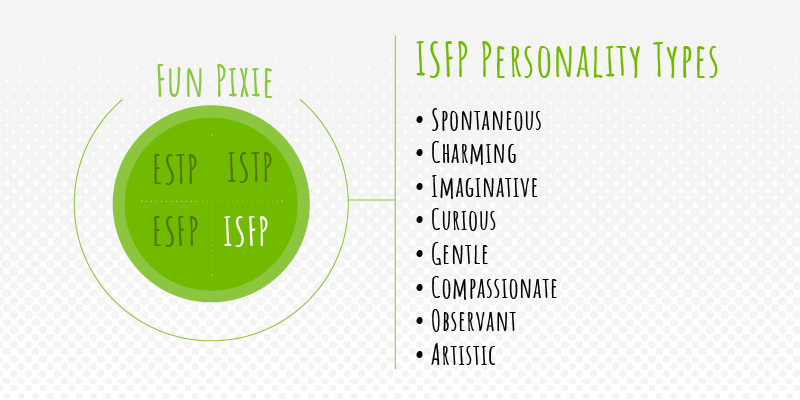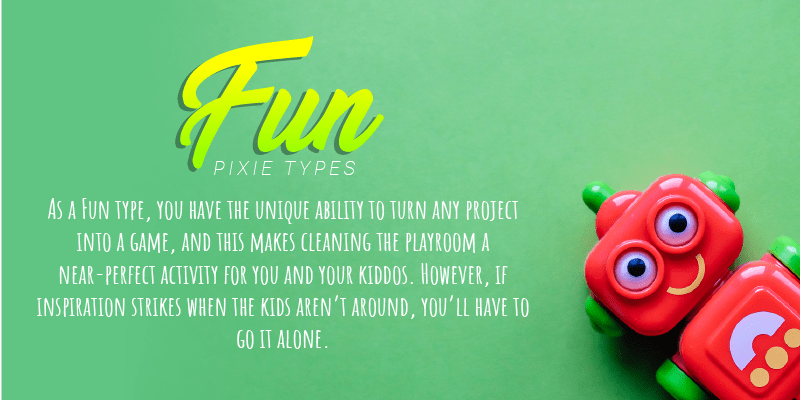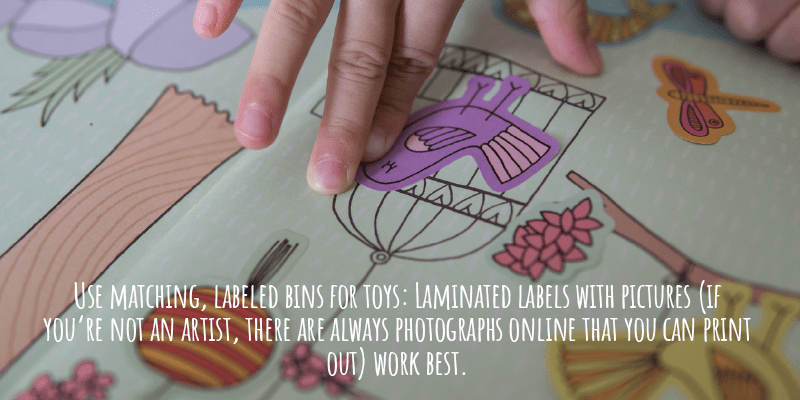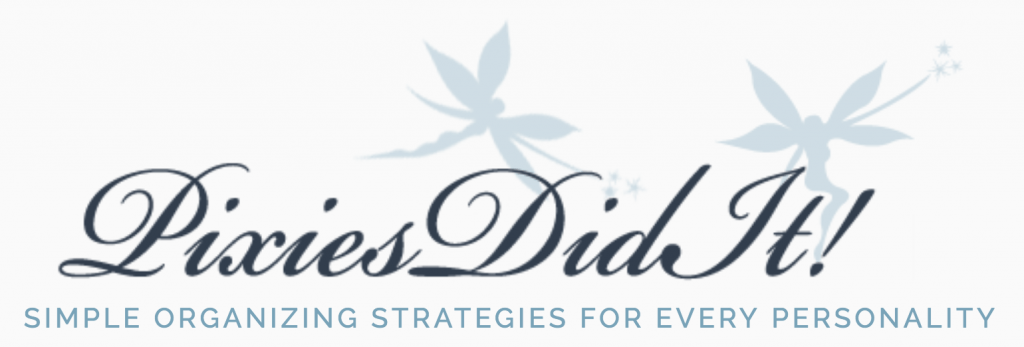How ISFP Personality Types (Pixie Type: Fun) Keep Playrooms Organized
Everyone knows that keeping playrooms and kid spaces organized can be, well, challenging to say the least. Oftentimes it seems the minute you get something in order, it’s tumbled back into chaos the next. What ISFP personality types have going for them is their innate ability to make simple and potentially boring organizational routines fun (there is a reason the corresponding pixie type for ISFPs is called ‘Fun’). Not only can they make organizing these spaces a sort of game for their kids, they can also turn it into a fun activity for themselves. As natural artists and aesthetes, they’ll love creating individualized labels for their matching toy bins (drawing a giraffe or an elephant is not nearly as stress-inducing an exercise for them as it might be for other types).
In this article, we’ll elaborate on the ways that this personality type can embrace their spontaneity in a way that will get the job done, and done with joy!
ISFP Personality Types (Pixie Type: Fun)

According to Truity.com, ISFP personality types are ‘composers’:
ISFP is an acronym used to describe one of the sixteen personality types identified by Katharine Briggs and Isabel Myers. It stands for Introverted, Sensing, Feeling, Perceiving. ISFP indicates a person who is energized by time spent alone (Introverted), who focuses on facts and details rather than ideas and concepts (Sensing), who makes decisions based on feelings and As a Fun type, you have the unique ability to turn any project into a game, and this makes cleaning the playroom a near-perfect activity for you and your kiddos. However, if inspiration strikes when the kids aren’t around, you’ll have to go it alone.values (Feeling) and who prefers to be spontaneous and flexible rather than planned and organized (Perceiving). ISFPs are sometimes referred to as Composer personalities because of their innate sensibility for creating aesthetically pleasing experiences.
If you are familiar with the Myers-Briggs model of personality typing, the above paragraph will make perfect sense. If this explanation leaves you mystified, however, we are happy to break things down for you. In short, the Myers-Briggs Personality Type Indicator was formulated in the 1940’s by Katharine Briggs and her daughter, Isabel Myers. The two wanted to build on famous psychologist Carl Jung’s theory of personality, which, in a nutshell, connected people’s behaviors to the way they used judgment and perception.
There are sixteen different personality types in the Myers-Briggs model. Each type is described with a four-letter combination, and represents the way a person responds to the world around them, makes decisions, interprets and processes information, and imposes structure onto events.
Fun Pixie Types: An Overview
These personality types loathe being ‘boxed in’ or trapped, and do best when given free aesthetic reign. They possess the following qualities:
- Spontaneous
- Charming
- Imaginative
- Curious
- Gentle
- Compassionate
- Observant
- Helpful
- Artistic
These traits make it easy for ISFP (Pixie Type: Fun) personalities to work and bond with children. In fact, they resemble children in the way they operate. They live entirely in the moment, and their best work (albeit organizing, crafting, engineering, etc.) is done spontaneously and when inspiration strikes. In terms of home organization, these types engage in creative problem-solving with the best of them, but unless they are inspired to engage in a particular project, have no interest in taking part. Boring routines are poison to ISFP folks, and they are only truly detail-oriented when it matters to them. For example, if they love to read, their bookshelves will be highly organized (probably by color), and if they hate to cook, or rarely do it, the kitchen will likely be a (contained) mess.
Though these personality types generally ignore places in the house that don’t ‘matter’ to them, they aren’t slouches. Things that need to get done often do, just not with the typical joyfulness that this type can exude. Read more about Fun pixie types in our book, available on Amazon!
How ISFP Personality Types Keep Playrooms Organized

The playroom is perhaps a perfect example of how ISFP personality types can excel and lend their unique skills to a project. As a Fun type, you have the unique ability to turn any project into a game, and this makes cleaning the playroom a near-perfect activity for you and your kiddos. However, if inspiration strikes when the kids aren’t around, you’ll have to go it alone. Turn on some of your favorite tunes, break out the markers and pens to draw/make labels, and enjoy this potentially creative activity! Here are some tips to ensure that your time spent organizing the playroom is not only fun, but productive:
- Use narrow categories: If you lump things together broadly, like trains and trucks and cars, that bin could become unruly and overflowing very quickly. It’s best (and more enjoyable) to create different labels for each category, so one for trains, one for trucks, one for cars, etc. The same goes for stuffed animals and other toys — make labels for each different type of animal. You’ll be able to spend that much more time creating lovely and unique labels with intricate drawings, which is something you’re naturally good at and enjoy!
- Purge when inspired: This goes for toys and artwork. Though certain Fun types might have no trouble decluttering, others might only be able to throw things out (or donate them) in the moment. Involving your children in this endeavor is entirely your call.
- Use opaque bins and cabinet doors: Fun pixie types have a good sense of where things are even when they’re not in plain sight, so keeping things in hidden storage areas is just fine.
General Playroom Organization Tips

If you’ve taken our Pixie Personality Quiz and are not a Fun type, here are a few easy rules to follow when it comes to tidying the nursery area:
- Try to purge frequently with your kids: If this is not possible or unappealing to you, go it alone, but use your discretion. Keep the toys you know your child is especially attached to. Get rid of all broken or otherwise unusable toys. These include toys with missing parts, toys your kids have outgrown and no longer play with, toys with missing pieces and toys you don’t like very much (that creepy doll that talks at you randomly? Definitely donate or toss).
- Use matching, labeled bins for toys: Laminated labels with pictures (if you’re not an artist, there are always photographs online that you can print out) work best. If you pair them with words, it’ll make cleaning and organizing even easier for the kids, and they’ll get a reading lesson, besides!
- Use small, matching hangers: Buy 12 extra in case some are lost or trampled. Huggable hangers carry a mini line that work quite well in children’s closets.
- Invest in a super sturdy storage system: Make sure this is a floor-to-ceiling shelving system that is professionally installed and triple secured, as kids will most likely try to climb on it at some point. Make sure the shelves are large enough to store the bins you’re using, and use the higher shelves to store things you don’t want grubby hands touching, like puzzles with tiny pieces, valuable books, etc.

